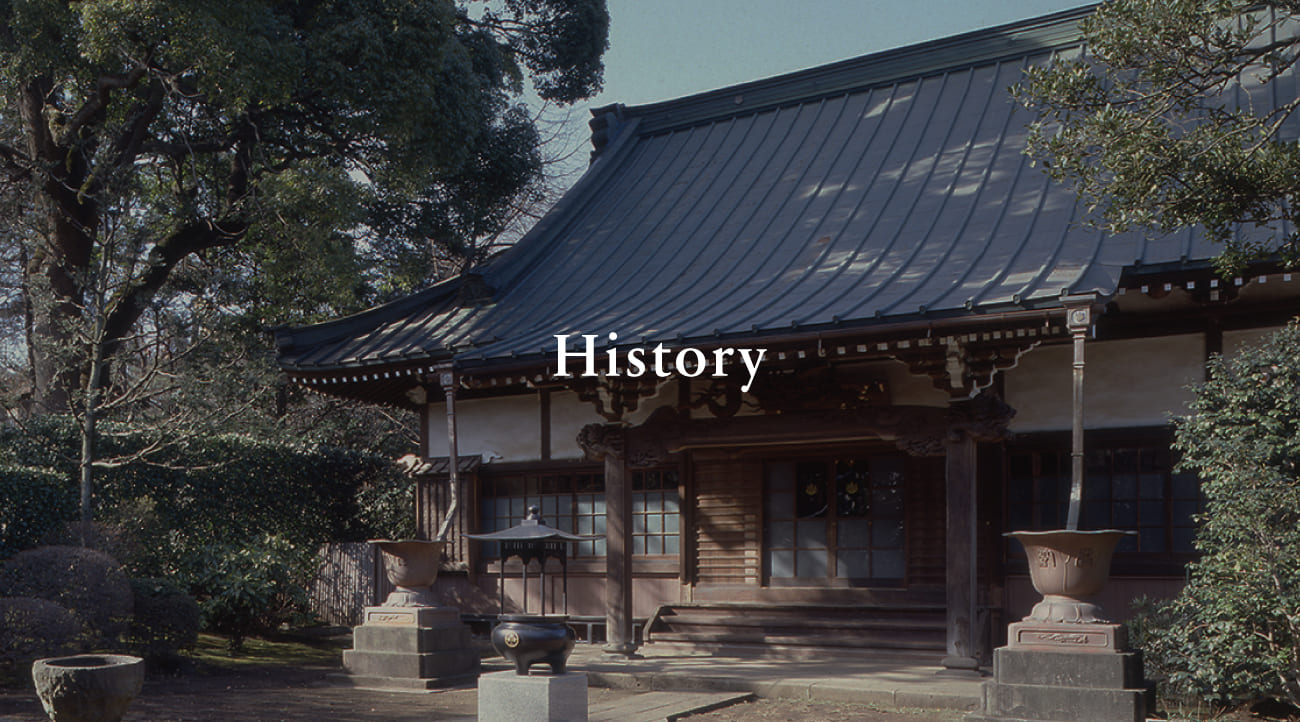

In the Soto Zen(曹洞宗), the two head temples are Eiheiji (永平寺) in Fukui Prefecture and Sojiji (總持寺) in Yokohama, Kanagawa Prefecture. In 1898, Sojiji, then located in Noto, Ishikawa Prefecture, suffered an unexpected fire and most of its temple buildings were destroyed.
After that, during the reconstruction efforts, Soto Zen decided to move the Sojiji Head Temple in the Tokyo metropolitan area, and the site of Joganji Temple in Tsurumi (a branch temple of Kenkohji), Yokohama was chosen for rebuild Sojiji Head Temple.
In 1906, it was officially decided to move Sojiji from Noto to Tsurumi, and the 15th Head Priest of Kenkohji Rev. MASUNO Kodo (枡野宏道和尚), made great efforts for moving the head temple. In recognition of his achievements, in 1907, Sojiji Zen Master Most Rev. Ishikawa Sodo (石川素童禅師), the head priest of Sojiji, listed Kenkohji as a temple close to the head temple and granted the special sacerdotal privileges of wearing colored robes.
Kenkohji was founded in 1560 by Suwa Mikawa no Kami Umanosuke (諏訪三河守右馬之丞(助), 5th Lord of Terao Castle, Tsurumi, Yokohama, who served the Hojo clan (北条家) in Odawara. He wanted to build a family temple for the Suwa clan (諏訪家), so he invited Rev. Daishu Choyo (大州長譽和尚), chief priest of Ryusanji Temple in Isehara, Kanagawa Pref., to build Kenkohji Temple. This is the legend that has been passed down until today However, new facts have come to light in recent years. The founder of the main temple of Kenkohji, Ryusanji Temple, was Lord Jinbo Miyauchikyo Teruhiro (神保宮内卿輝 廣公). Although there are no official records of Lord Teruhiro, he is said to have been the son of Ise Soun (Hojo Soun. 伊勢(北条)早雲)) and a younger brother of Ujitsuna(北条氏綱). When the issue of succession arose between Hojo Ujitsuna’s children Ujiyasu and Tamemasa (Lord of Tamanawa Castle), Teruhiro was the central figure who pushed Tamemasa to become the successor. However, after Ujiyasu succeeded to the title of third head of Hojo- Clan, Teruhiro and his younger brother Terunobu were forced to become monks and live in seclusion. This is the origin of Ryusanji Temple. Teruhiro’s successor, Jinbo Magosaburo, was also forced to become a monk, which ultimately led to the extinction of the family line. Jinbo Magosaburo was truely forced to become a monk and was kept under the watch of the Suwa family by becoming the third cheif priest of Kenkoji Temple, Koshu Josan (瑚州恕珊和尚). The person who supervised him was the second chief priest of Kenkoji Temple, Shouan Shumon (聲庵守聞和尚, forth chief priest of Ryusanji Temple).
The Kenkohji Temple’s honorific mountain name Tokuyu-san(徳雄山) comes from the bravery of Suwa Mikawa-no-kami Umanosuke. Before the fifth Lord of Terao Castle prepared the sacred buildings as a temple, it was called “Zuiun-in” (瑞雲院)as the family temple of the Suwa clan. The name is said to come from the two Chinese characters “Zui 瑞” and “Un 雲” from Hojo Soun’s official name, “Souzui Hojo Soun (宗瑞北条早雲),” and the temple was given the name “Zui” and “Un” to pledge its loyalty to Hojo-Clan.
The temple’s name, Kenkoji, was chosen to commemorate the military bravery of the temple’s founder, Suwa Mikawa no Kami Umanosuke, fifth Lord of Terao Castle, and the temple was built as a result of his achievements, and its official name is Tokuyu-san Zuiun-in Kenkohzenji (徳雄山瑞雲院建功禅寺).
As proof that the Suwa clan founded the temple, the Suwa clan’s family crest, “Suwa Kaji,” is used as the alternative crest and is still passed down today as the temple’s crest.

Letters Patent from Sojiji Zen Master Most Rev. Ishikawa Sodo (石川素童禅師), the head priest of Sojiji, when Kenkohji was listed as a temple close to the head temple and granted the special sacerdotal privileges of wearing colored robes.

Kenkohji’s crest originated from that of Suwa-Clan.


(Ref.) Crest of SUWA Grand Shrine (Nagano Pref.)